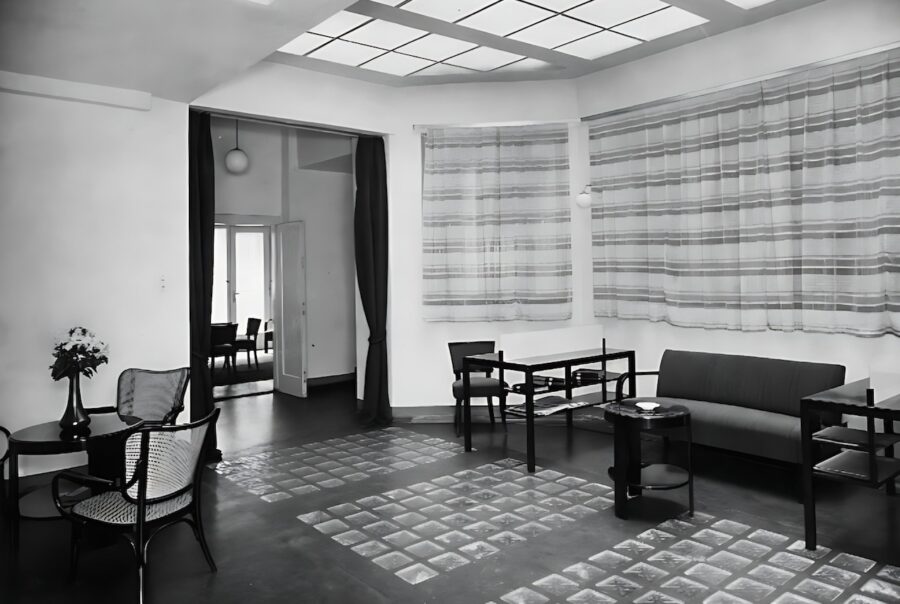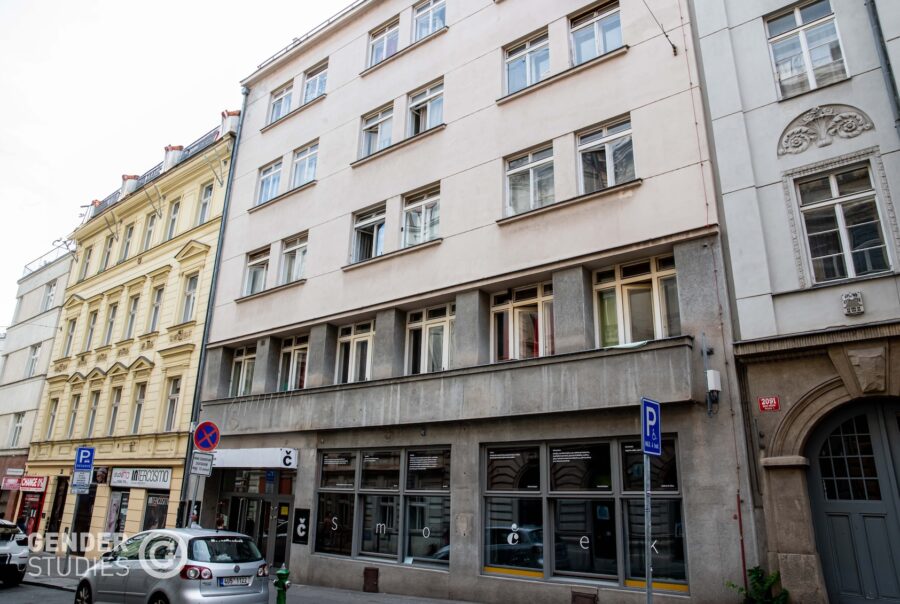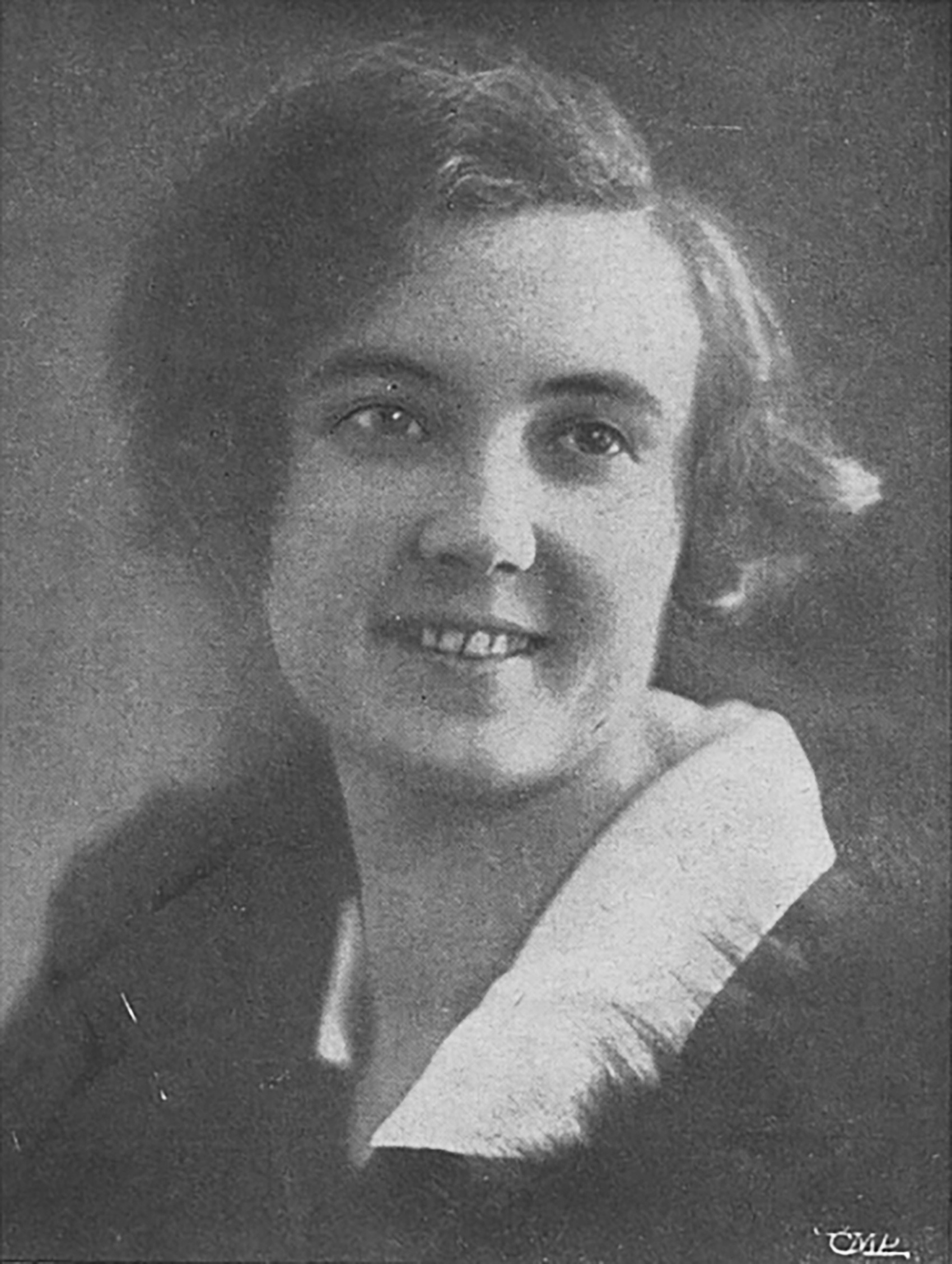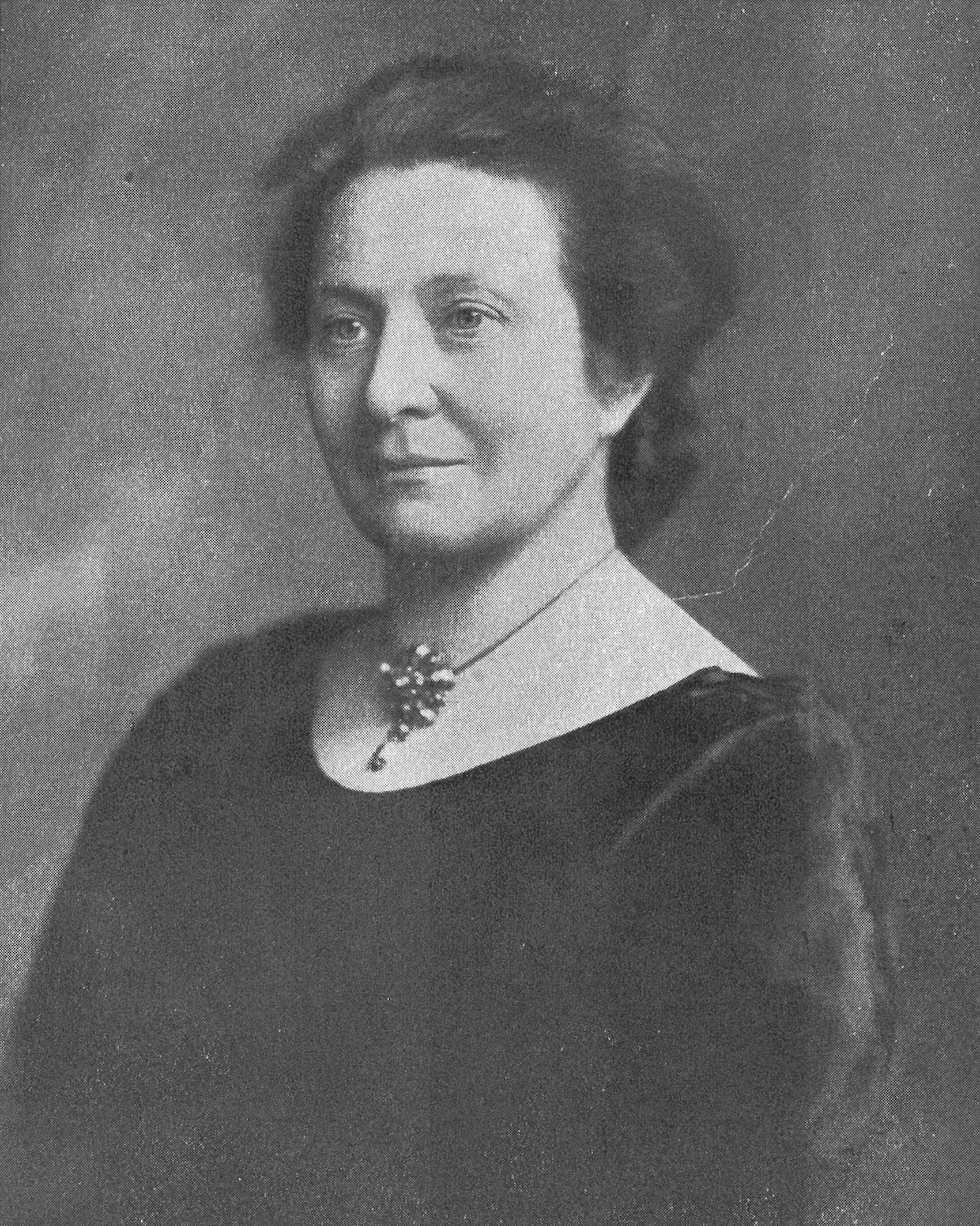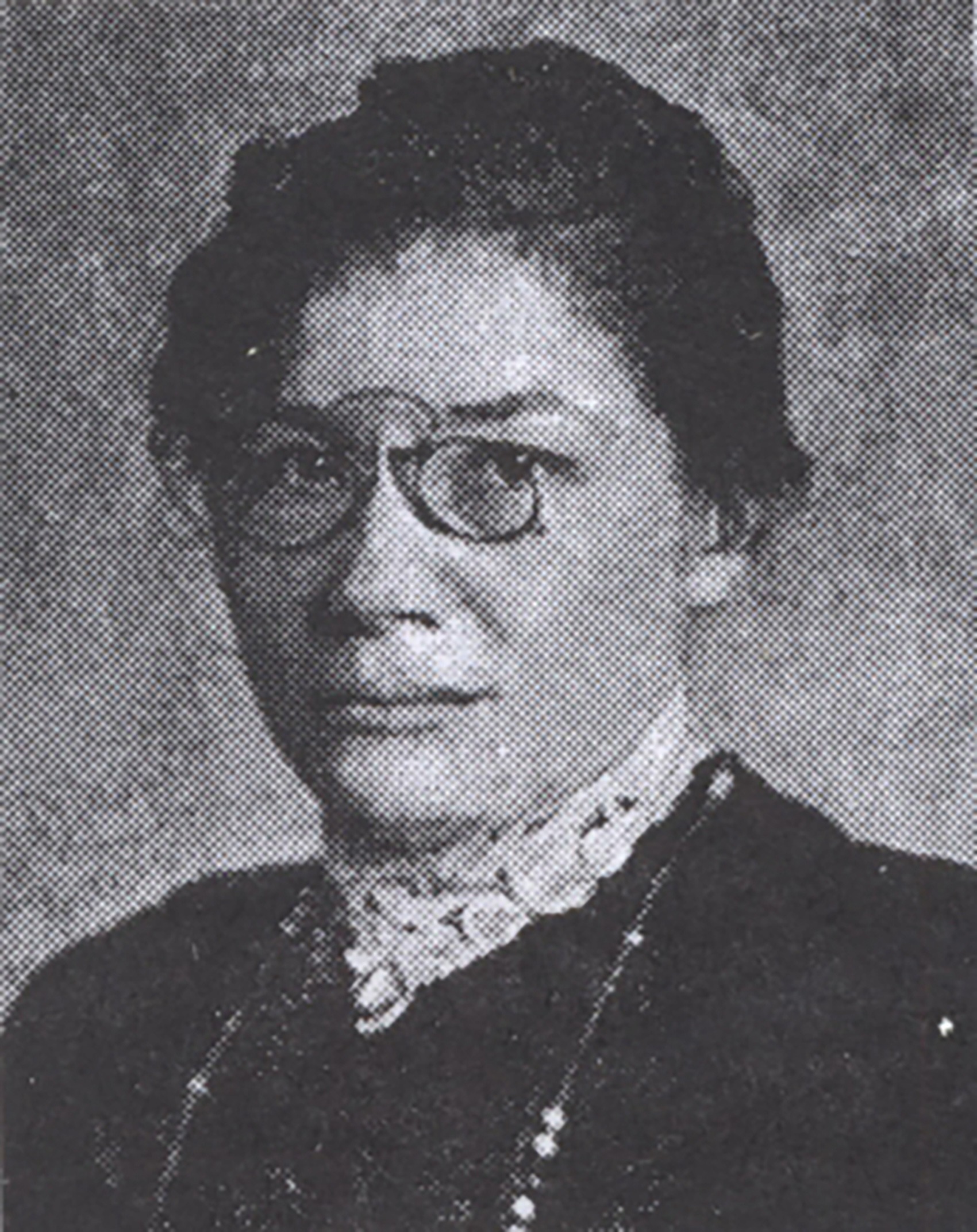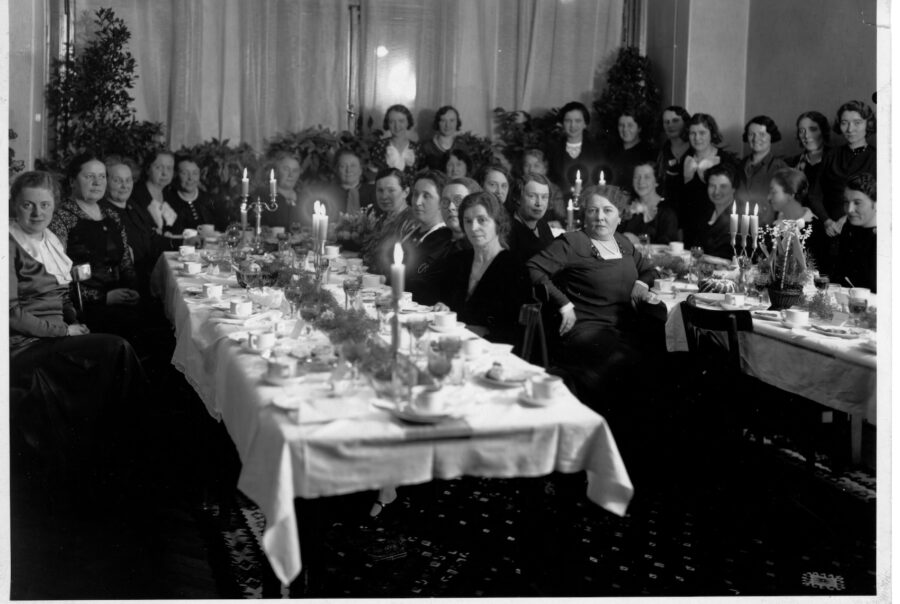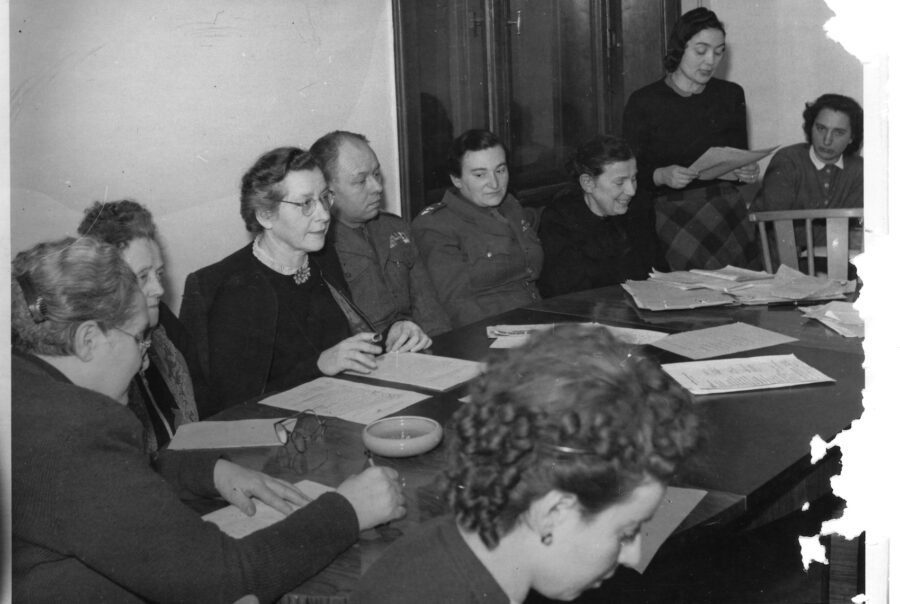The history of this building dates back to the year 1928, when the Czech Women’s Club (co-founded by Charlotte Garrigue Masaryk) decided to build its own community centre. A cooperative started for this purpose issued share certificates for sale to individual members. Another part was funded by credit paid from membership fees. Important roles in the project were played by Senator Františka Plamínková, social worker and Czechoslovak Red Cross founder Alice Garrigue Masaryk, and the first Czech female architect Milada Petříková-Pavlíková, who was a club member and created, without recompense, the design of the building including its interior equipment.
Finally, in 1933, the Club opened a multipurpose functionalist building with club lounges, a library, a lecture hall, women’s quarters, and a restaurant. The rather humble quarters came with a single shared kitchen for the entire building and one shared bathroom per floor. All the premises were dedicated exclusively to women; men could only access the restaurant, which also served vegetarian meals. The entire building is true to the functionalist style. It features an extremely simple, undecorated façade, and the interior exhibits the same purity of style. The floor plan is defined by an octagonal central area with a staircase extending from the basement to the attic. The staircase still has well-preserved tube handrails.
A number of women’s organizations held their educational activities in the community building, and individual women had access to dormitory-style accommodation. The Czech Women’s Club operated without problems till the outbreak of WWII, when the building was seized by the Nazi regime and many members got arrested; Františka Plamínková was executed. While Milada Horáková took on Plamínková’s role in the Club, the communist regime after 1948 took a generally hostile attitude to free association – women’s clubs were now considered mere bourgeois entertainment. Following the arrest of Milada Horáková in September 1949, a general meeting was swiftly convened and amidst an atmosphere of fear, the association dissolved itself on the very same day. When the Ve Smečkách building became government property in 1955, it continued to serve as women’s quarters. In the early 1960s, its former lecture hall became the seat of the Činoherní klub theatre.
In 1990, the Czech Women’s Club was re-established and applied for its building to be returned. In 1998, feminist organizations organized a rally and started a petition to support the return effort. Speakers formulated the reasons behind contemporary feminist organizations’ moral and material right to the community building. To women’s organizations, the house is closely associated with women’s emancipation and important leaders such as Františka Plamínková or Milada Horáková. However, the return effort failed because in restitution proceedings, the court did not acknowledge the re-established Club as a legal successor of the founding cooperative. This meant a lost opportunity for bringing all feminist collectives together under one roof.
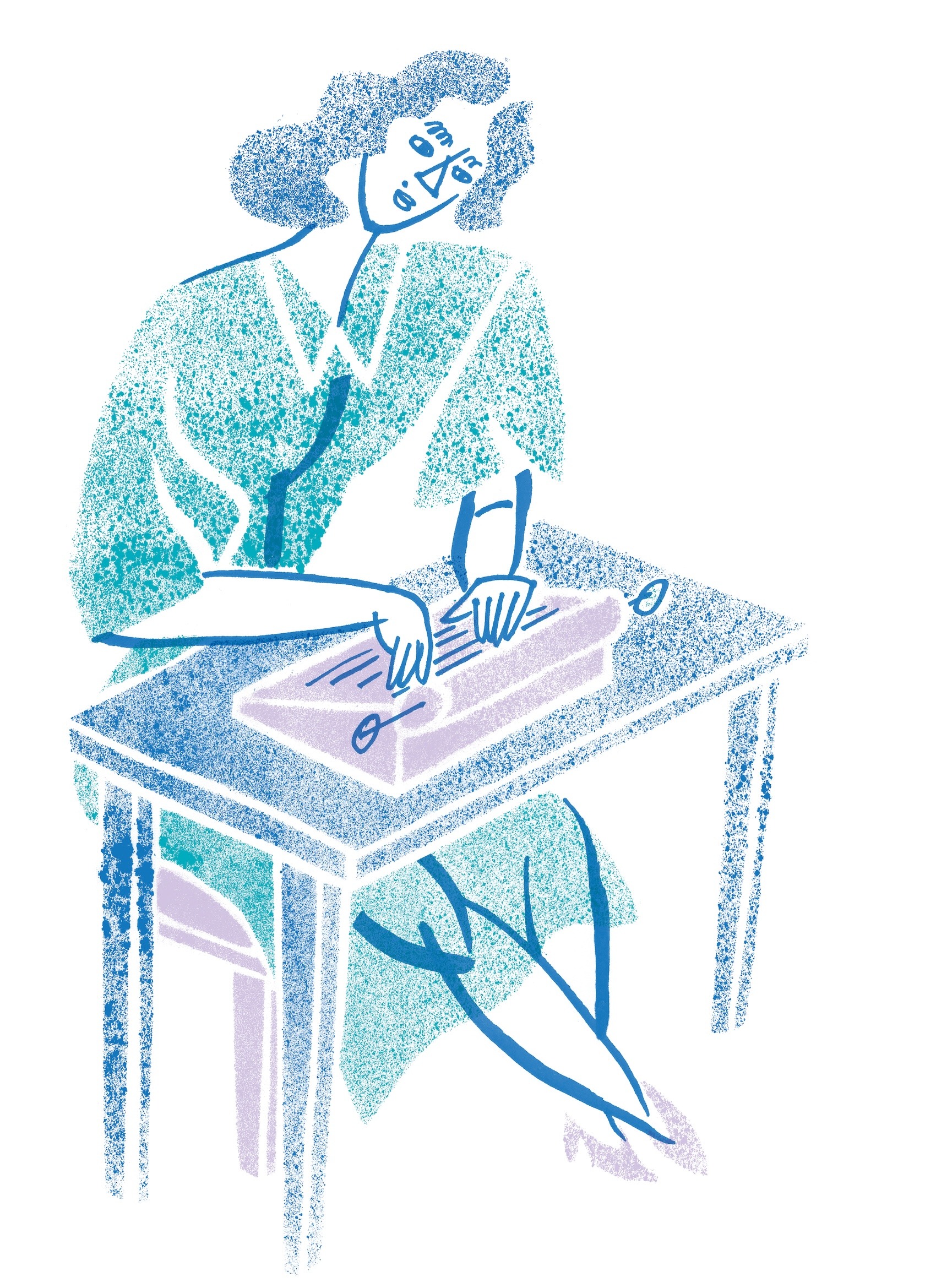
Listen to the whole story of Anna Kovář (Czech only)”How did I become Františka Plamínková's secretary at the Czech Women's Club in Ve Smečkách?
Milada Petříková-Pavlíková
(1895–1985)
first Czech female architect
“Life is very joyful in the dormitory, and I sense that the residents feel happy. Perhaps even those living more difficult lives will find help in the community to better overcome their troubles.” (Milada Petříková-Pavlíková: Byt samostatné ženy [The independent woman’s flat], in: Jak bydleti [Improving one’s housing], a lecture course held by the Women’s National Council, Housework Optimization Section, Praha 1935).
She was born in 1895 into a patriotic physician’s family in the town of Tábor. She graduated from the Minerva Gymnasium. Milada was strongly influenced by her aunts, the first Czech female physician Anna Honzáková and a long-term collaborator of Eliška Krásnohorská and Minerva teacher Albína Honzáková. In 1914, she started studying architecture, first as a private tutee, as the Austro-Hungarian law did not yet permit women to become regular students at technical colleges. In 1921, she became the first woman in Czechoslovakia to obtain the architect’s degree (Ing. arch.). She primarily focused on social housing. For example, she designed a rental building for single women in Prague’s district of Dejvice or a women’s shelter built in the name of Charlotte Garrigue Masaryk. The seat of the Czech Women’s Club, which served as a community centre of the Czech women’s movement, represents one of her most significant works.
Františka Plamínková
(1875–1942)
democratic socialist politician, parliamentarian, journalist, teacher, feminist
“The woman still has to struggle for the right to work, she is faced with extra obstacles in her access to higher professions, and she is less likely to be promoted. Her position becomes much worse if she is married. This is my way of saying, in general terms, that the theoretical equality of women has not been thought through and implemented in everyday practice… I wonder if even the smartest, most educated women realize they are actually living under the pressure of inferiority”. (Františka Plamínková in an interview for a female social workers’ journal, 1935)
Františka Plamínková was a Czech politician, member of the democratic socialist National Socialist Party, parliamentarian, journalist, teacher, feminist, and organizer of the Czechoslovak and international women’s movements. She became one of the key figures in the history of women’s emancipation. Born in 1875 into the family of Prague shoemaker František Plamínek and Františka Plamínková née Krubnerová, she graduated from an official programme of teacher’s education in Prague and worked as a teacher and journalist for many years. She joined the Women’s National Council (Ženská národní rada), an umbrella organization for women’s associations to coordinate feminist activities, where she collaborated with Milada Horáková, among others. Františka Plamínková also helped abolish female teachers’ celibacy (in 1919) and introduce women’s suffrage (in 1920). She openly opposed the Nazi regime. For example, during the Sudeten Crisis of 1938, she wrote an open letter to Adolf Hitler denouncing the accusations that President Edvard Beneš engaged in murdering ethnic Germans. Since she refused to denounce the assassination of Reinhard Heydrich, among other things, she was imprisoned and executed by the Nazi regime on 30 June 1942.
She developed a great deal of social conscience and considered herself a democrat and humanist. She initiated the construction of the seat of the Czech Women’s Club and the Women’s Homes (Ženské domovy) for working singles in Prague’s district of Smíchov , or the so-called Red Houses in the district of Holešovice (a participatory housing project with a common cafeteria, crèche, kindergarten, and gymnasium). She attended international congresses and conferences supporting human rights and women’s emancipation. For many years, she served as vicepresident of the International Council of Women, in the International Women’s Suffrage Alliance, or in the International Federation of Business and Professional Women. She supported women’s education and equal position in paid employment and political life, protection of working-class women and female clerks, equal rights for children born out of wedlock, the right to maternity leave, dignity in childbirth, a ban on human trafficking, or efforts to maintain peace. Thanks to these activities, she won respect around the world.
Františka Zeminová (Fráňa Zemínová)
(1882–1962)
democratic socialist politician, parliamentarian, feminist, resistance fighter, and political prisoner
“The laws of fallen Austria prevented women from fully developing their female individuality. The imposition of female teachers’ celibacy (…) undercut the liberty of female teachers. As a result, female teachers cannot freely and independently exercise their genuinely human rights. (…) The concerns that a woman pursuing a profession could not be a good wife or mother is proven wrong by countless analogies of businesswomen, craftswomen, and female factory workers. (…) For these reasons, we propose abolishing celibacy for female teachers at public schools in the Czechoslovak Republic.” (Františka Zeminová’s parliamentary speech, 1919)
Františka Zeminová was an important Czech politician, member of the democratic socialist National Socialist Party, and leader of the women’s movement. Born in 1882 into a farmer’s family in a village near Kolín, she was the youngest of 12 children. After studying a business-oriented secondary school in Prague, she worked as a bookkeeper and retail assistant at a publishing house. As early as at the age of 15, she entered political life by joining the democratic socialist Czech National Socialist Party. She was active in the Czech Women’s Club and co-founded an association of women workers in 1901. In 1905, she joined Františka Plamínková in establishing the Women’s Suffrage Committee (Alice Garrigue Masaryk was also a member). She gave regular lectures and wrote for a number of periodicals. In the years 1918–1939 and 1945–1948, she was member of the National Assembly, thus becoming Czechoslovakia’s longest-serving female parliamentarian. She also worked as vice-chair of the National Socialist Party (later renamed to Socialist Party) and head of the party’s women’s chapter.
She advocated for social policies and social equality for women, playing an important role in abolishing female teachers’ celibacy, transforming girls’ schools into public schools, and supporting women’s political activity. She was renowned for her intelligence, sharp tongue, energetic rhetoric, and courage. During World War II, she joined the Czech resistance and took part in the Prague Uprising. After the war, she resumed her office as vice-chair of the National Socialist Party and head of its parliamentary party group. After publicly criticizing the politics of the Communist Party, she gave up politics following the coup d’etat of 1948. She was monitored by the secret police and later arrested as part of a show trial of Milada Horáková. The charges brought against her included high treason, espionage, preparing war, and anti-state conspiracy. In 1950, she was sentenced to 20 years in prison. After 10 years, she got released under a presidential amnesty of 1960. Suffering from ill health, she found refuge with her niece Anna Stránská, to whom she said at that time: “You know, I am like grass. No matter how much they trample it, it will get up again.” She passed away in 1962 in the spa town of Velichovky. In 1992, President Václav Havel awarded her the Order of Tomáš Garrigue Masaryk of the Third Class in memoriam.


